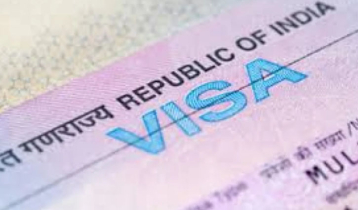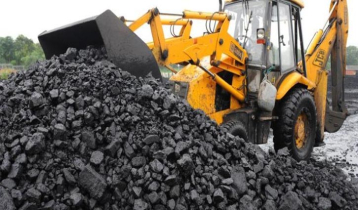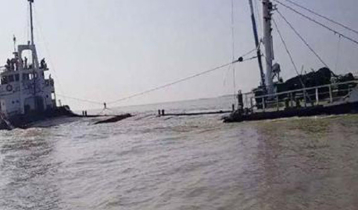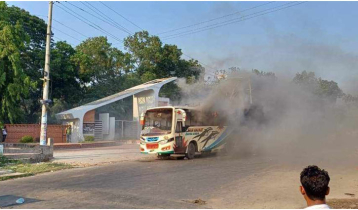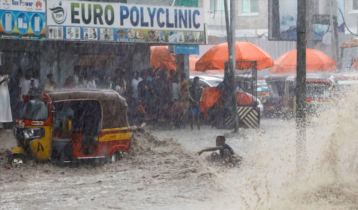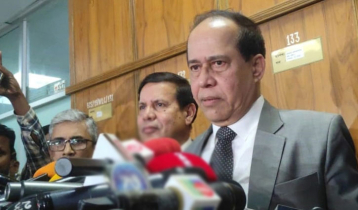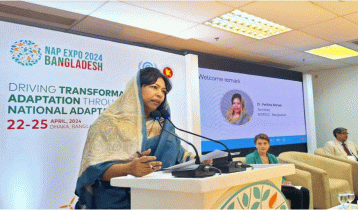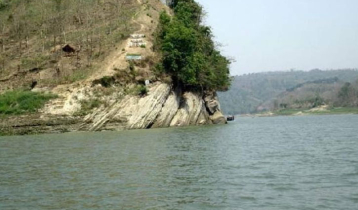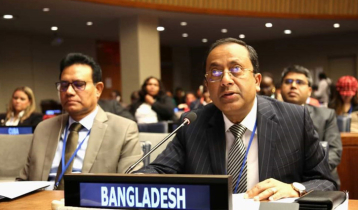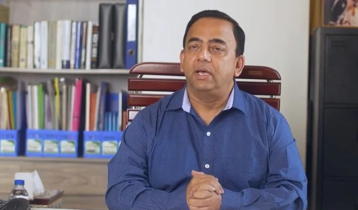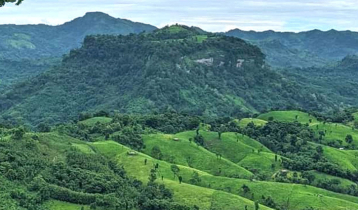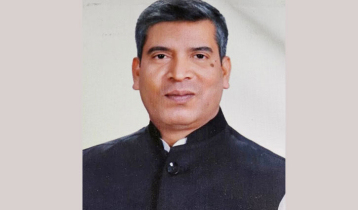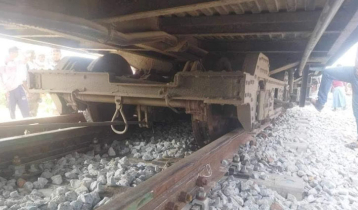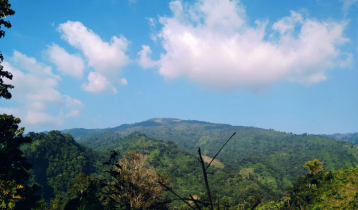We are under threat of major earthquake!
Nasim || risingbd.com
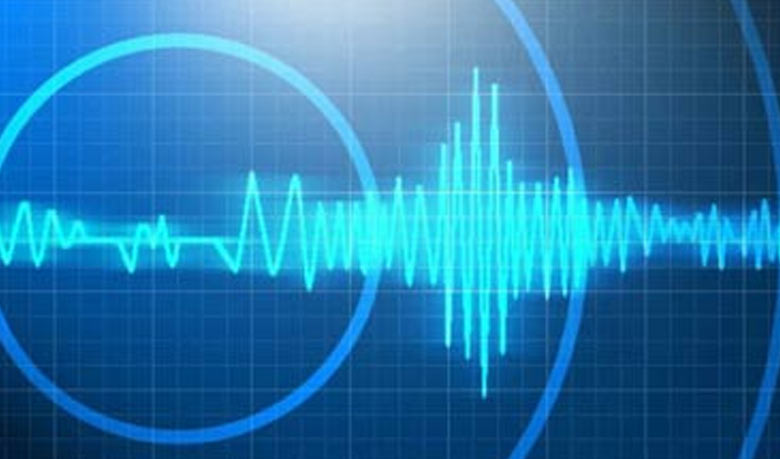
Mostafijur Rahman Nasim: Earth processes are so powerful that humans cannot hope to control them. But, by understanding what causes these hazards and why they occur, we can do a great deal to reduce their harmful impacts and save lives.
Bangladesh experiencing a number of mild-to-moderate tremors since couple of years, it is feared that a major earthquake is set to rock the region in the near future.
Two residential buildings tilted in separate areas of Dhaka after a 6.7 earthquake rocked Bangladesh at 5:05am on Monday.
About five other buildings in Dhaka have shown cracks after the quake, media reports instantly.
Earthquakes, as with most natural disasters, have this uncanny ability to strike when you are most vulnerable and unprepared.
It is not uncommon to see images of people running out of a building during a tremor, and it is a reason for many fatalities that could have been avoided.
Actually what is the earthquake? And why it happened? We need to go little details and we will understand the main causes of earthquake and how it will affect in Bangladesh. Is it Bangladesh really risk for the next earthquake according to the scientist research or is it only prediction? But there is no theoretically has proven that climate change or global warming to lead the risk of earthquake anywhere in the world.
The causes of earthquake are movements within the Earth’s crust cause stress to build up at points of weakness, and rocks to deform. The stored energy is suddenly released as an earthquake. These earthquake belts provide an important clue in the development of the theory of plate tectonics. A map of the world`s earthquakes shows that most of them lie in narrow zones, often around the edges of the continents, or in the middle of the oceans.
If we look at the pattern of where earthquakes occur around the world, it is clear that most of the earthquake activity is concentrated in a number of distinct earthquake belts. For instance, there are many earthquakes recorded around the edge of the Pacific Ocean, or in the middle of the Atlantic Ocean.
An earthquake is caused by a sudden slip on a fault. The tectonic plates are always slowly moving, but they get stuck at their edges due to friction. When the stress on the edge overcomes the friction, there is an earthquake that releases energy in waves that travel through the earth`s crust and cause the shaking that we feel. Hot magma rises from the mantle at mid-ocean ridges pushing the plates apart. Earthquakes occur along the fractures that appear as the plates move apart.
The country geographically located close to the junction of two subduction zones created by two active tectonic plates: the Indian plate and the Eurasian plate.
In addition, the country is surrounded by the Himalayan Arc, the Shillong Plateau and the Dauki fault system in the north, the Burmese Arc and Arakan Yoma anticlinorium in the east, and the Naga Disang Haflong thrust zone in the northeast.
With more than 160 million people, Bangladesh is the most crowded place on earth, and one of the poorest–and it is growing fast. It sits on the world’s largest river delta, close to sea level, which exposes it to tsunamis and the possibility of rivers jumping their banks in the event of earthquake. And, it is furiously putting up bridges and multistory buildings that increase its vulnerability.
Scientists have come to recognize that it sits at the juncture of several active tectonic plate boundaries–including the tail end of the one that caused the 2004 Sumatra tsunami that killed over 200,000 people, 1,300 miles south. Syed Humayun Akhter, a seismologist at the Dhaka University Earth Observatory, warned that an earthquake near the crowded capital could dwarf other modern tragedies.
The most recent quake today did not cause casualties due to “sheer luck” because the tremor stopped in less than two minutes.
In a “worst-case scenario”, more than 100,000 people may die and numerous others need hospitalisation if a 7.5 magnitude earthquake from the nearby Madhupur Fault were to hit the capital, according to a 2009 study by the Comprehensive Disaster Management Programme (CDMP) under the Ministry of Food and Disaster Management.
A strong earthquake of 8.6-magnitude occurred in Assam on August 15 in 1950, killing 1,526 people. Another 8.1-magnitude quake hit Assam on June 12 in1897, killing 1,500 people.
The casualties were less because of low density of population and fewer numbers of concrete structures at that time.
What are some recommendations for earthquake preparedness?
Find a safe place that can provide shelter during an earthquake. The space can either permit you to crawl under it and take cover, or it can be the intersection of two sturdy walls (column).
Fix items firmly that could come undone during the quake and cause harm (decoration items, book shelves, wall mirrors, light fixtures, etc).
- Practice how to “Drop, Cover and Hold”; if you live in an area prone to regular earthquakes. It is essential to regularly practice this procedure, as you will have only a few moments to react during an actual earthquake.
- Store critical documents and other belongings in a dedicated spot that can easily be retrieved by any member of the family (passports, ID, property documents, etc).
- Have an effective communication plan, particularly important in case you are separated during a quake. Do not forget to practice this plan especially with children.
- When choosing a new property, check if it is earthquake resistant per the local building codes.
- During an earthquake take cover, many studies show that injuries and deaths caused by earthquakes are due to falling objects.
If you are indoors when an earthquake strikes:
- Drop, Cover, Hold:
- Drop to your hands and knees.
- Cover your head and neck with your hands.
- Hold your position until the tremors stop.
- Do not run outside (falling debris or things from the roof or other floors may fall on you).
- Do not use elevators.
- If you are not near a desk or a table, drop to the floor next to an interior wall and protect your head and neck with your arms.
- If in bed stay there and cover head with a pillow, get out of bed only when tremors stop and wear footwear.
- Stay away from windows or any glass walls and panels.
- Avoid exterior walls, windows, tall furniture, large appliances, cabinets filled with heavy items, hanging objects and mirrors.
More than a third of Bangladesh`s 131 million population lives in vulnerable areas in the north, southeast and central parts of the country. Some 21 people were killed in an earthquake in Chittagong city in 1997, while at least 10 died and over 100 were injured as a result of a tremor on the offshore island of Moheskhali in 1999.
Bangladeshis have learnt to live with the devastating storms and floods that lash their country recurrently.
But, now the question is- will we be able to withstand a major earthquake?
risingbd/Dhaka/Jan 4, 2016/Nasim
risingbd.com



